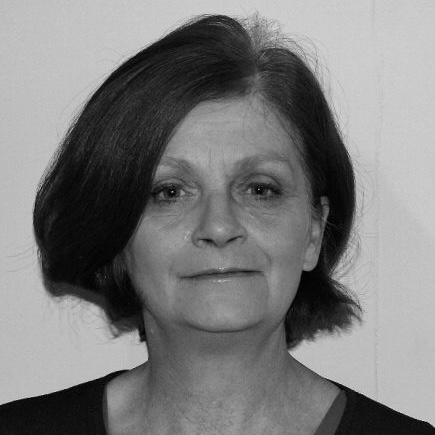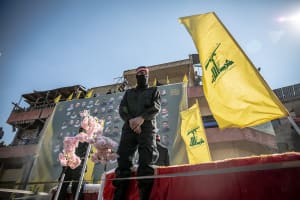BBC report fails to substantiate the allegation made in its headline

On the afternoon of November 13th the BBC News website published an article credited to the BBC Jerusalem bureau’s Lucy Williamson who, readers are told, was “[r]eporting from Israeli-occupied Golan Heights”.
The headline to that article tells BBC audiences that “Israeli construction along buffer zone with Syria violates ceasefire, UN says”. However, the article itself fails to substantiate the claim that Israel has ‘violated’ the terms of the 1974 Disengagement Agreement between Syria and Israel.
Before Williamson’s report even begins, a photo caption tells readers that “The BBC saw construction work on the Israeli side of the ceasefire line in the occupied Golan Heights”. [emphasis added]
The report opens with promotion of allegations of “severe violations”:
“The United Nations says Israeli construction along a demilitarised buffer zone with Syria has led to “severe violations” of a 50-year-old ceasefire agreement, which risk increasing tensions along their shared frontier in the occupied Golan Heights.”
It goes on:
“The BBC has filmed construction taking place alongside a military vehicle near the town of Majdal Shams, and fresh earthworks in rural land further south. The work in both locations is believed to lie within Israeli-controlled areas.
The UN Disengagement Observer Force (UNDOF) says most of the Israeli construction does not breach the AoS [Area of Separation, formerly known as the Demilitarised Zone -Ed], but that some trenches – dug under protection from military vehicles including tanks – do cross into it, and that Israeli army vehicles and personnel have also entered the buffer zone.”
Readers then learn that UNDOF’s Chief Mission Support Bernard Lee has not actually seen the trenches and that UNDOF has no “visual evidence”.
“Chief of Mission Bernard Lee told the BBC that two major lines of trenches had been dug, along with three more limited ones, each some 6m (20 ft) wide.
He estimated that trenches crossed into the AoS in a handful locations [sic], by a couple of metres in each case, but said he had not visited the sites himself.
UNDOF was not able to immediately share visual evidence of the reported incursions, and permission for the BBC to view or film the locations from a nearby observation post has so far not been granted.”
On the day before the publication Williamson’s article, the Times of Israel had reported that UNDOF’s “severe violations” claims were prompted by the appearance of an AP report:
“The comments from the UN Disengagement Observer Force, which has patrolled the area since 1974, come after an Associated Press report Monday that published satellite imagery showing the extent of the works along the frontier. […]
High-resolution images taken on November 5 by Planet Labs PBC for The AP show over 7.5 kilometers (4.6 miles) of construction along the Alpha Line, starting some 3 kilometers (1.8 miles) southeast of the Israeli town of Majdal Shams in the Golan Heights, where a July rocket strike by Hezbollah killed 12 children playing soccer.”
The BBC’s report also includes two rather unhelpful images credited to Planet Labs.
Williamson tells readers that:
“…UNDOF said in a statement that the Syrian authorities had “strongly protested” the ongoing Israeli work. And that the UN itself had “repeatedly” taken its concerns over the Israeli violations to Israel’s military authorities.”
She does not however remind BBC audiences that a decade ago, during the Syrian civil war, UNDOF largely abandoned the demilitarised zone and redeployed to the Israeli side for several years or that both the Syrian army and assorted armed groups were active in that supposedly UNDOF enforced demilitarised area.
So why would Israel be constructing trenches and earth beams along the ceasefire line? CAMERA UK spoke to a local security official who explained that the purpose of the work is to prevent an October 7th-style attack on civilian communities in the Golan Heights.
Williamson’s report includes a similar statement from the IDF:
“Israeli Defence Forces (IDF) spokesman Lt Col Nadav Shoshani told the BBC that the trenches were designed to protect against infiltration by Iran-backed groups in Syria – and did not break the ceasefire agreement.
“Israeli officials have been communicating with the UN about these issues,” he said. “And I can tell you that the IDF is operating on Israeli territory making sure that a terror invasion is not possible, making sure we are defending our borders.”
Williamson continues with another quote from the UNDOF Chief of Mission:
“The threat of a surprise invasion by Israel’s neighbours has loomed larger here since the 7 October Hamas attacks.
“Will [the trenches] stop what happened on 7 October? Yes,” said Bernard Lee. “Could you get a pick-up truck over it? No.””
BBC audiences’ understanding of the story would of course have benefitted from information concerning the identity of parties on Syrian soil which might try to carry out such an infiltration (and how that risks “increasing tensions”) but beyond a brief reference to “the presence of Iran-backed militia groups in Syria”, Williamson has nothing to tell her readers, preferring to go on to make totally irrelevant points:
“But the defences being built along this frontier don’t address the more immediate threat from drones and missiles regularly launched by Iranian militia groups in Syria and Iraq – and frequently shot down by Israeli forces.
Nor do they address Israel’s concerns about Syria being an “oxygen line” for Iran to smuggle weapons to its Lebanese ally, Hezbollah.”
Williamson’s portrayal of the Golan Heights includes the following:
“Israeli settlers there live alongside about 20,000 Syrians, most of them Druze, who stayed on in the Golan after it was captured.”
Williamson does not clarify that around 20% of the Druze living in the Golan Heights hold Israeli citizenship – and are therefore not “Syrians” – and that the others are permanent residents of Israel before going on to interview a “Syrian hotel owner” who is obviously pleased with Israel’s new security measures.
““The situation is frightening,” said Wafik Farhat, a Syrian hotel owner in the occupied Golan Heights. “Our eyes are looking more to the sky than to the plants. There’s fear here.”
Farhat’s eco-lodge, with its yurt accommodation surrounded by orchards, looks out onto rows of fresh trenches along the buffer zone.
“It gives us a sense of security,” he said. “We can sleep in peace, because there’s someone taking care of the border and not letting terrorists cross towards us.””
Notably, Williamson has nothing to tell BBC audiences about the severe damage caused to local tourism businesses and their employees in the Golan Heights since Hizballah chose to attack Israel on October 8th 2023.
Readers of this report are told that it includes “[a]dditional reporting by Charlotte Scarr and Ed Habershon”. Exactly how Scarr (based in the UK) and Habershon (based in South Africa) contributed is unclear. The credits also refer to “Verification work by Richard Irvine-Brown and Benedict Garman”, although it is not made clear what those two BBC Verify staff members actually verified.
In other words, at least five members of BBC staff worked on a 958-word report which fails to provide any factual evidence to support the sensationalist allegation in its headline that Israel is ‘violating’ a 50-year-old ceasefire agreement.

Hadar Sela was born in the north of England and has lived in Israel for over three decades. She has a special interest in the influence of the media on the British public’s perceptions of the Middle East and the Islamist networks operating in the UK and has written pre-emptive reports on several anti-Israel campaigns, including the flotillas and the Global March to Jerusalem in March 2012. Hadar’s work has been published in the Jerusalem Post, The Algemeiner, The Commentator, MERIA Journal and at Harry’s Place, among others.














